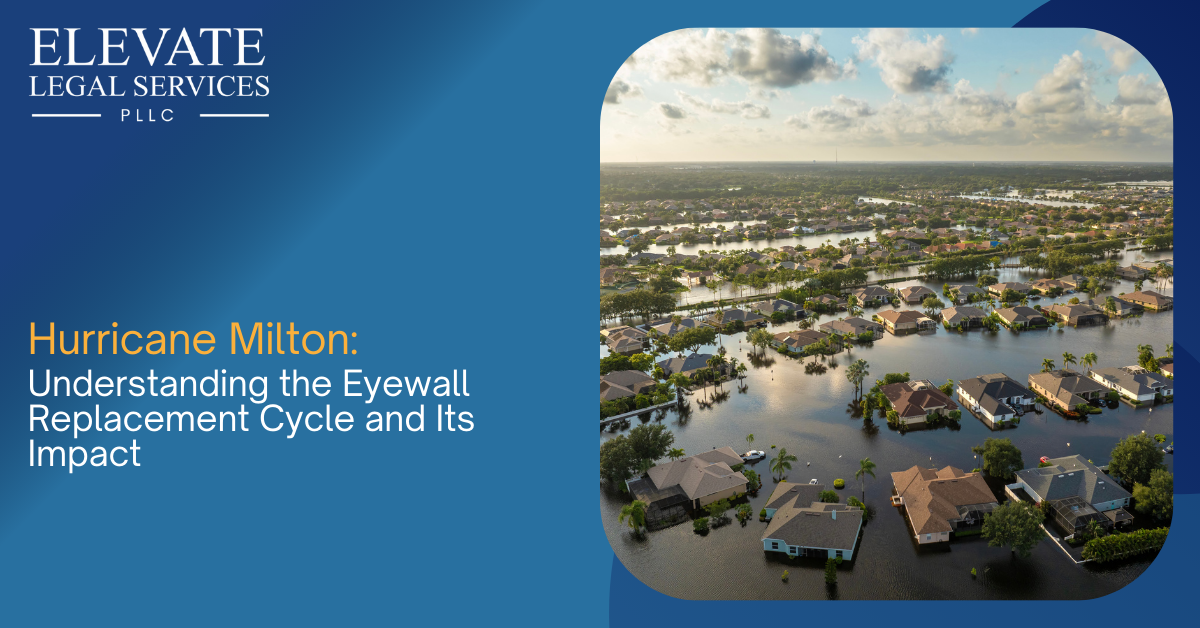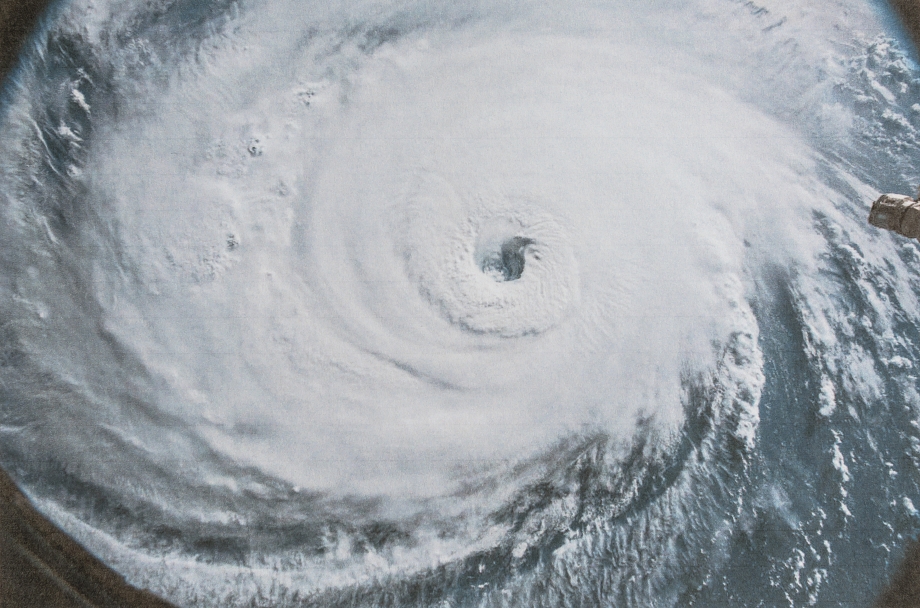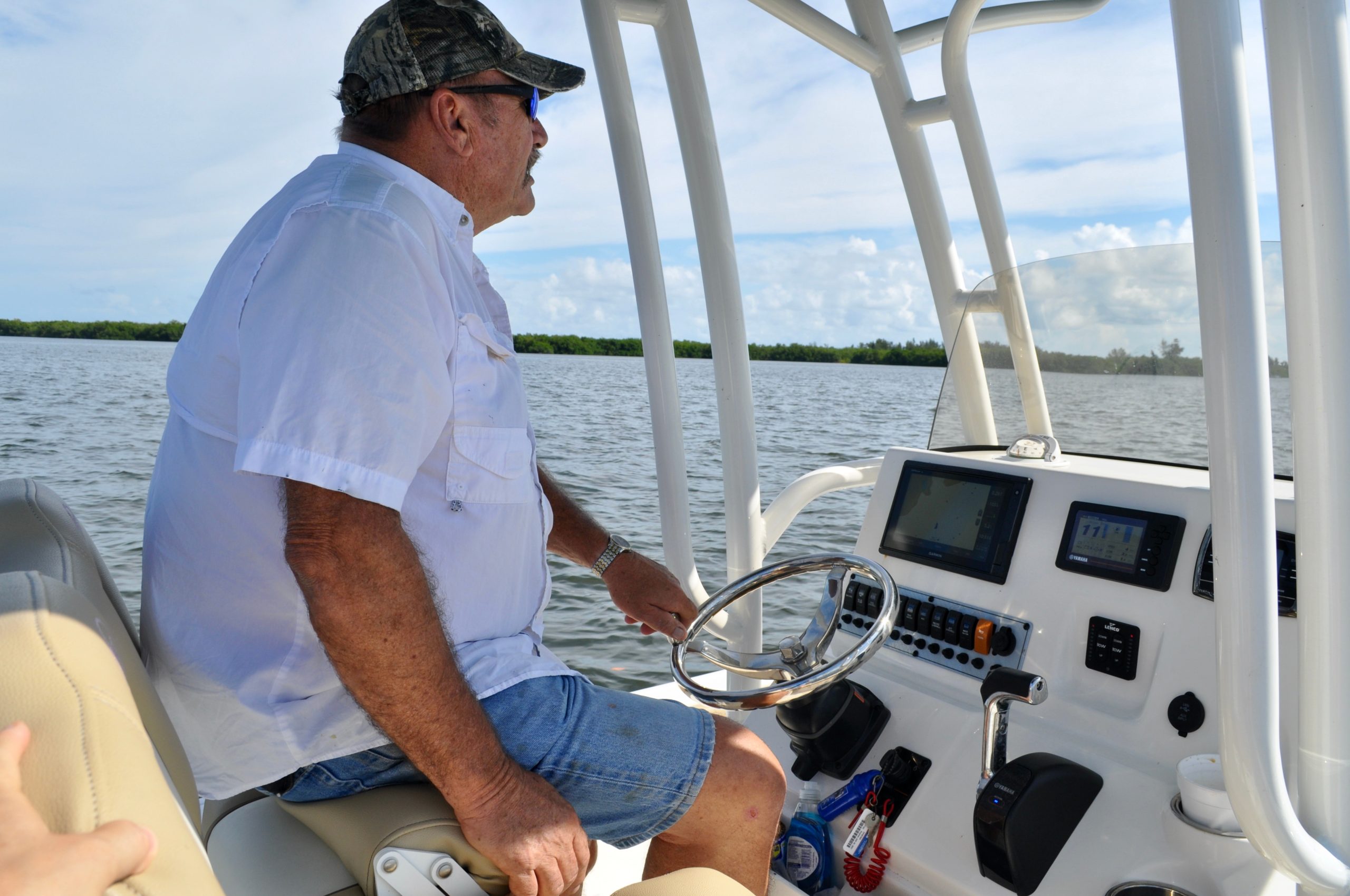
Hurricane Milton has taken center stage in the latest weather updates, becoming a major concern for Florida and the surrounding regions. What makes this storm particularly intriguing and potentially more dangerous is its recent Eyewall Replacement Cycle. This phenomenon, while common in very strong hurricanes, plays a crucial role in how hurricanes like Milton evolve, grow, and sometimes even intensify. In this blog, we’ll break down the eyewall replacement cycle and its impact on hurricanes, using Hurricane Milton as a real-world example. To understand the impact of Hurricane Milton, Contact Elevate Legal Services, PLLC today.
At Elevate Legal Services, PLLC, we are recognized nationwide for our expertise in federal flood insurance claims. Unlike state-regulated insurance, flood coverage is governed by complex federal laws that require strict compliance. Failing to meet these specific requirements can jeopardize your ability to recover compensation for flood damages. To ensure you secure the compensation you’re entitled to, our team at Elevate Legal Services, PLLC, will guide you through the entire claims process. Contact us today at 561-770-3335 or email [email protected] for expert assistance with your flood insurance claim.
What Is The Eyewall Replacement Cycle?
 The Eyewall of a hurricane is the ring of thunderstorms that surrounds the storm’s center, or “eye.” It’s here where the most intense winds and rainfall occur, making it the most dangerous part of a hurricane. However, as hurricanes intensify, especially when they reach Category 4 or Category 5 status, the eyewall can become unstable. At this point, a natural process called the Eyewall Replacement Cycle (ERC) may begin.
The Eyewall of a hurricane is the ring of thunderstorms that surrounds the storm’s center, or “eye.” It’s here where the most intense winds and rainfall occur, making it the most dangerous part of a hurricane. However, as hurricanes intensify, especially when they reach Category 4 or Category 5 status, the eyewall can become unstable. At this point, a natural process called the Eyewall Replacement Cycle (ERC) may begin.
During an Eyewall Replacement Cycle, some of the outer rainbands of the hurricane consolidate into a new outer eyewall. This new ring of thunderstorms slowly moves inward, stealing energy and moisture from the original eyewall. As the old eyewall weakens and dissipates, the new, larger one takes its place. This process often causes the hurricane to temporarily weaken, but after the new eyewall is fully formed, the storm can begin to intensify once again.
How Did The Eyewall Replacement Cycle Affect The Impact Of Hurricane Milton?
Hurricane Milton experienced an Eyewall Replacement Cycle overnight, which caused it to temporarily weaken from a Category 5 to a Category 4 storm. This reduction in intensity might seem like a relief, but it’s a signal of potentially more danger ahead. As the new, larger eyewall forms, Milton’s wind field has expanded, meaning that its destructive winds now cover a larger area.
Moreover, once the new eyewall stabilizes, there’s a strong possibility that the storm could re-intensify, potentially even surpassing its previous peak strength. This is why meteorologists are closely monitoring Hurricane Milton, as it could regain Category 5 status before making landfall.
Why Is The Eyewall Replacement Cycle Important?
Understanding the eyewall replacement cycle is crucial for several reasons:
- Wind Field Expansion: After an ERC, the storm’s wind field grows in size. This means a larger area will be affected by hurricane-force winds and tropical-storm-force winds, increasing the potential for widespread damage.
- Fluctuations in Strength: While hurricanes tend to weaken during an ERC, they can quickly regain strength once the new eyewall is formed. This fluctuation makes predicting the storm’s intensity more challenging.
- Impact on Landfall: If a hurricane undergoes an ERC just before landfall, it could result in a larger, more powerful storm making landfall, bringing more destructive winds, storm surges, and heavy rainfall.
What Is The Impact Of Hurricane Milton For People In Its Path?
 Residents in the path of Hurricane Milton, especially along Florida’s Gulf Coast, should remain vigilant. Although the storm weakened temporarily, its wind field has expanded, and it could regain strength as it approaches land. Storm surge, heavy rainfall, and flash flooding are still significant threats, and the possibility of a larger, more intense storm making landfall cannot be ruled out.
Residents in the path of Hurricane Milton, especially along Florida’s Gulf Coast, should remain vigilant. Although the storm weakened temporarily, its wind field has expanded, and it could regain strength as it approaches land. Storm surge, heavy rainfall, and flash flooding are still significant threats, and the possibility of a larger, more intense storm making landfall cannot be ruled out.
As always, follow the guidance of local authorities, heed evacuation orders, and stay informed about the storm’s progress.
Final Thoughts
The Eyewall Replacement Cycle is a fascinating yet dangerous feature of powerful hurricanes like Milton. While it can lead to temporary weakening, the ultimate impact is often a larger, potentially more destructive storm. As Hurricane Milton continues its path toward Florida, it serves as a reminder of the complexities of hurricane dynamics and the importance of preparedness.
Stay safe, stay informed, and follow all official storm warnings and advisories as Hurricane Milton nears.
If you’re unsure about your flood insurance coverage or need help navigating the claims process, contact Elevate Legal Services, PLLC, today at 561-770-3335 or email us at [email protected] for assistance with your flood insurance claim. Our team is experienced in handling flood damage claims and can help you get the compensation you deserve.






